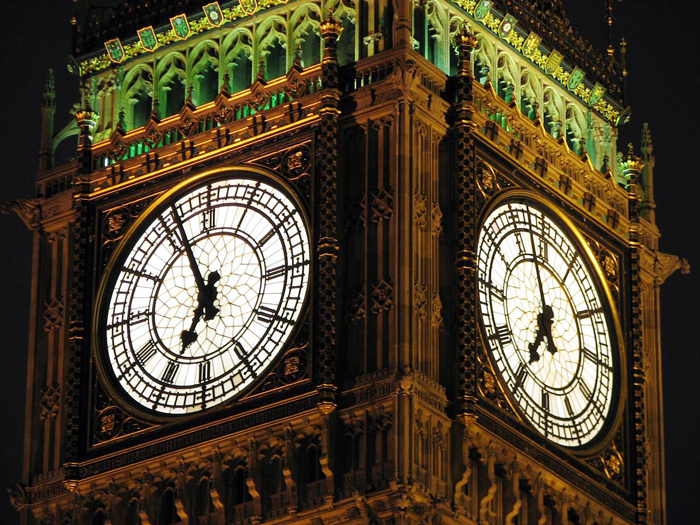Big Ben is actually the name for the bell inside the Clock Tower at the Palace of Westminster, though the name "Big Ben" is often attributed to the tower itself. The tower stands as an international symbol of the city of London, and is arguably its most recognizable landmark.
The 316 foot high tower was built in 1858, after the original Palace of Westminster was destroyed in a fire in 1834. The origin of the name "Big Ben" is uncertain, however, historians believe it came from Benjamin Caunt, a famous boxer at the time.
Today, the palace clock is the largest four-faced chiming clock in the world. Its hour hand is nine feet long and its minute hand is fourteen feet long.
The University of Oxford
The Colosseum is a large, ancient Amphitheatre located in Rome. Construction on the Colosseum began in 70 AD under the Roman emperor Vespasian, and was completed in 80 AD under Titus. The colossal structure once seated over 50,000 spectators, who who would come to The Colosseum to see gladitorial combat, mock sea battles, animal hunts, theatrical performances, executions, and other public spectacles. The Colosseum was used for over 500 years and was the largest amphitheatre ever built in the Roman Empire.
Although the Colosseum has been eroded over time by earthquakes and stone-robbers, it remains one of the international symbols of Rome. |
| |
Tower of London |
| |
The Tower of London is a huge fortress located in central London. It was originally built by William the Conqueror in 1078. The tower and surrouding structures were originally used as a fortress, palace, and prison. Nevertheless, it also served as an armory, treasury, zoo, and even as a place where prisoners were tortured. Anne Boleyn and Catherine Howard, two of the wives of Henry VIII, were both beheaded here. The largest and most famous of the buildings within the complex is known as the White Tower. The White Tower is 90 feet tall and features walls that are between 11 and 15 feet thick.
The Tower of London is well-known for its residents ravens. According to legend, Charles II ordered the removal of the ravens after he found their droppings on his telescope. He reconsidered his order, however, after he was informed of a superstition that claimed the entire English kingdom would fall if the ravens were removed. Today, there is a special person called the "ravenmaster" who tends to the resident ravens. The ravens' wings are clipped to prevent them from flying away. |
| |
Stonehenge |
| |
 |
| |
| Stonehenge is one of the most mysterious monuments in the world. Located about eight miles northwest of Salisbury, England, Stonehenge is a set of earthworks surrounding a circular grouping of large, standing stones known as megaliths. Considering Stonehenge is about 4,000 - 4,500 years old, Archaeologists still aren't sure how the people of that time moved and positioned the stones. Archaeologists are also unsure of what Stonehenge was meant to represent or how it was to function, though many theories exist. Some believe Stonehenge was used as an ancient observatory, others believe it was built as a permanent stone symbol of the more numerous wooden structures that were built in the area, and still others believe it was an ancient alien landing site! |
|
|


